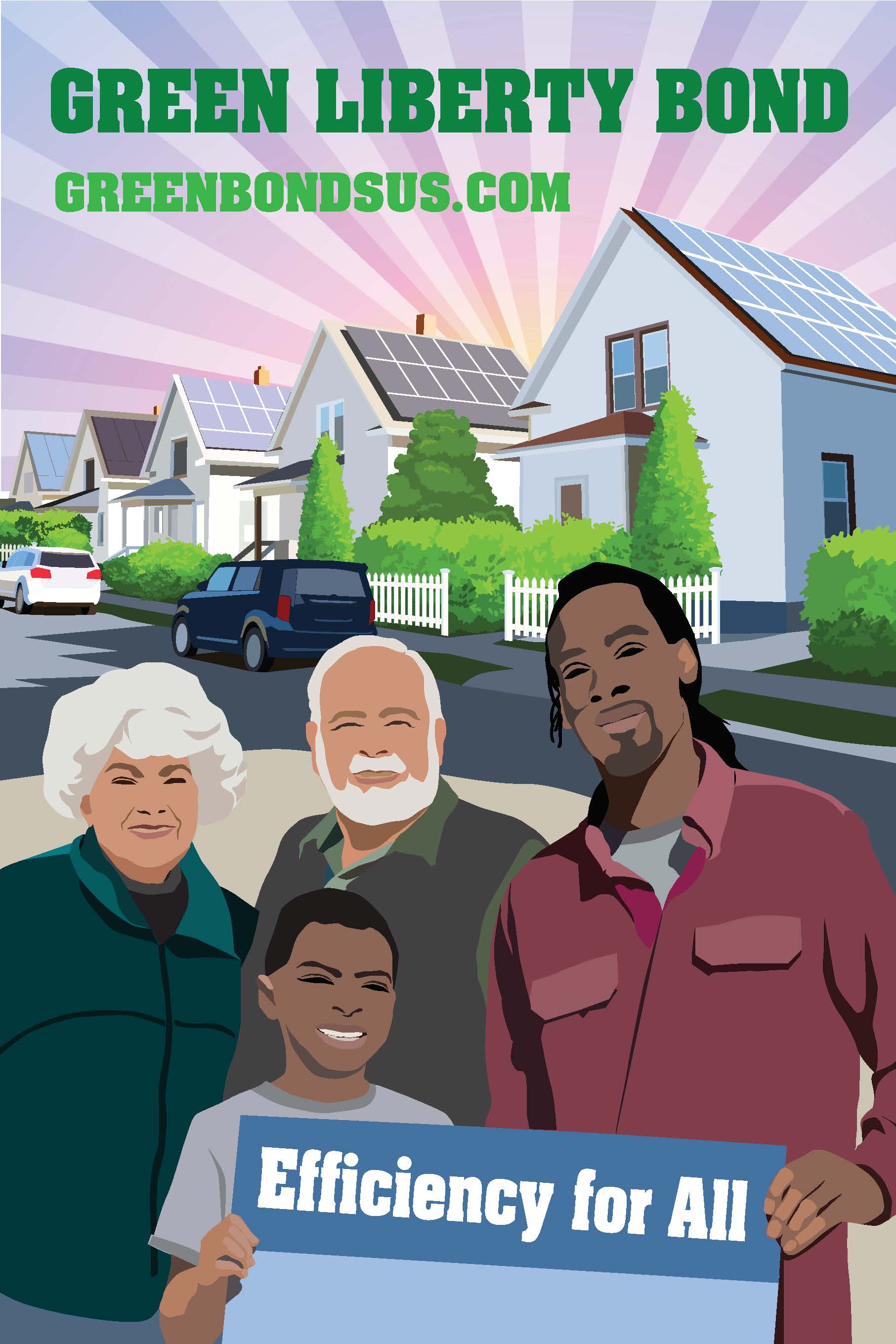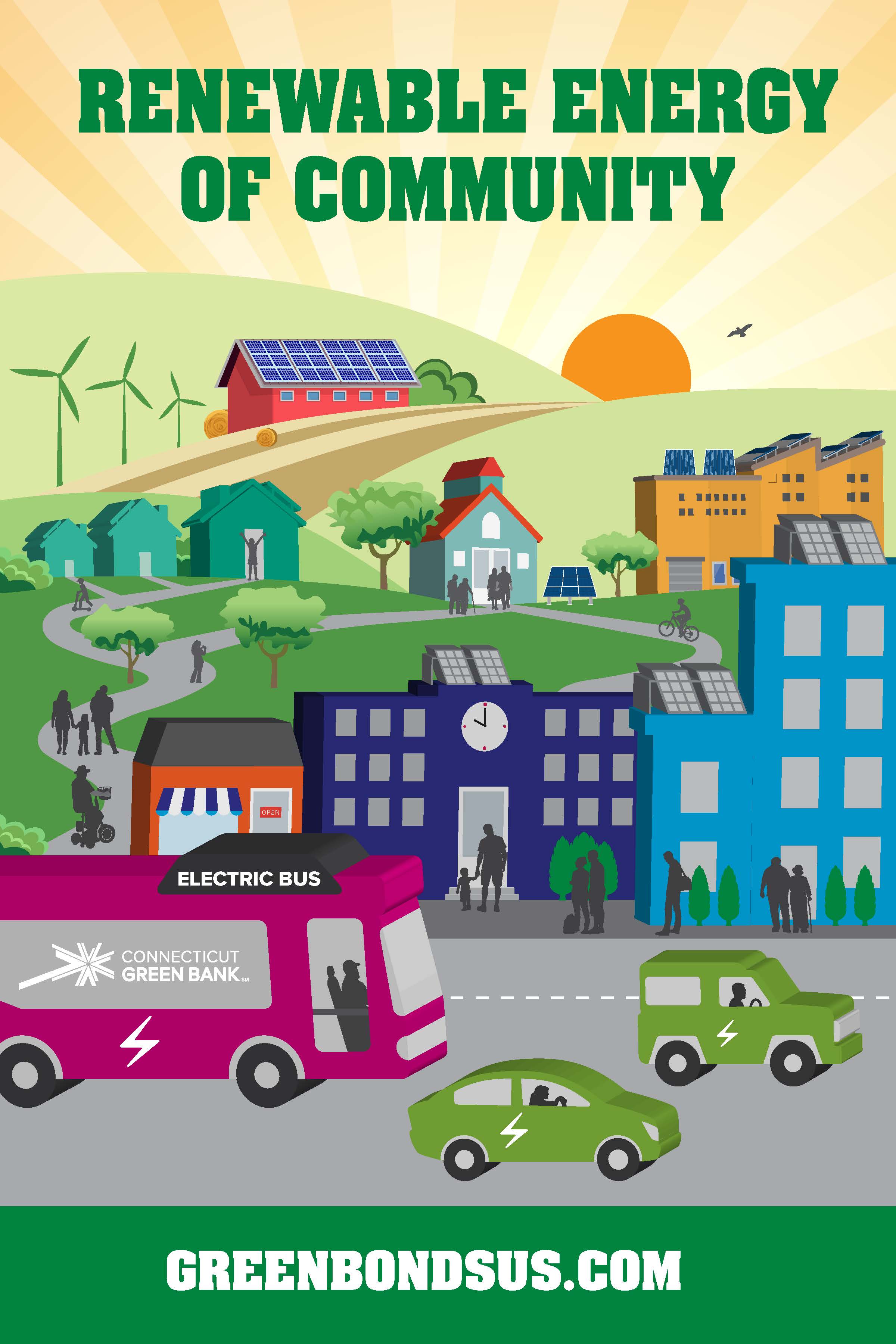Rudy Sturk, Director, Marketing & Communication
Connecticut Green Bank
Connecticut Green Bank
Have questions? Reach out to us directly.
World War II and the War Bonds
The history of War Bonds in the United States and Connecticut is incredible! From May 1, 1941, when President Franklin D. Roosevelt purchased the first one through 1945, over $185 billion was raised through the sale of War Bonds – the equivalent of $2.7 trillion today. More than 85 million Americans, over half of the country’s population, purchased $20 billion of Series-E War Bonds at denominations as low as $25 and high as $1,000 – or between $435 to $17,500 today, respectively. Even more, Americans promoted the purchase of War Bonds to defend our country and support Democracy around the world. This was an inclusive, all-hands-on-deck effort across every race, every sex, and every age.
Connecticut was among the leading states with the greatest amount of War Bond sales during this period, and First Lady Eleanor Roosevelt made a special visit on March 22, 1943, to promote sales alongside the Girl Scouts in Hartford, Connecticut at the Bushnell Theater.
Funding Another Noble Cause
On April 17, 2009, in New Haven, Connecticut, James Cameron addressed a crowded auditorium of students and faculty at the Yale Center for Business and the Environment. There, the former Chairman of Climate Change Capital introduced the concept of an environment bond inspired by the War Bonds of the 1940s. As War Bonds provided Americans with a means of defending liberty, patriotism, and democracy in World War II, Cameron felt environment bonds had the potential for capitalism to unlock idealism to confront climate change. “There is something powerful in the idea that, ‘My money built that and it works and I use it.’ Building things for a purpose that binds investors, worker, user – and society – is a noble cause.” [1]
Connecticut’s Leadership in Democracy and Innovation

Connecticut has a rich history when it comes to Democracy, clean energy, and climate change. Known as the “Constitution State,” it was the Fundamental Orders of 1639 from Windsor, Wethersfield and Hartford that was the world’s first written constitution for a self-governing people and seen as the prototype of our U.S. Constitution which was adopted over 150 years later. Entrepreneurs were active with innovative technologies. Daniel Halladay created and manufactured wind turbines in the 1850s and Colonel Albert Pope was working on electric vehicle technologies in the 1900s. The first Presidential motorcade and certainly the first (and quite possibly the only) in an electric vehicle, happened with Theodore Roosevelt in downtown Hartford on August 22, 1902. It was in Westbrook, Connecticut on August 27, 2001, where Resolution 26-4 “Resolution Concerning Energy and Environment” was signed by the New England Governors and Eastern Canadian Premiers establishing the first regional climate change action plan in the United States, in collaboration with Canada. Alexis de Tocqueville recognized the importance of civic engagement in American democracy and the role of states like Connecticut.
“The civilization of New England has been like a beacon lit upon a hill, which, after it has diffused its warmth around, tinges the distant horizon with its glow.”
As the nation’s first “Green Bank,” the Connecticut Green Bank was created by a bipartisan act of legislation in July of 2011. With the mission to “confront climate change and provide all of society a healthier and more prosperous future by increasing and accelerating the flow of private capital into markets that energize the green economy,” the Connecticut Green Bank was awarded the prestigious Innovations in American Government Awards from the Ash Center at the Kennedy School of Government at Harvard University in 2017 for “Sparking the Green Bank Movement”. There are green banks now at the city, county, and state levels across the country, national policy proposals for a U.S. Green Bank [2] and U.S. Climate Bank, [3] and green banks being created in developed and developing countries around the world.
Vision to Confront an Another Existential Crisis
James Cameron had a vision of environment bonds over a decade ago – whereby “Governments would collect money from investors who would benefit from guaranteed – but modest – rates of return…the bonds could tap a vein of renewed idealism among investors who are seeking to use the financial system for good causes.” In 2018, the “Green Bond” market saw $170 billion issued with 40% of the proceeds being invested in clean energy projects, and as noted by Forbes, are seen as an important mechanism to solve climate change. [4] What if, like Series-E War Bonds, governments across this country – municipal, state, and federal governments – were to issue third-party climate-certified [5] Green Bonds that individuals and families could invest in to confront climate change?

It is only befitting, that as we approach the 50th anniversary of Earth Day – April 22, 2020 – that having been inspired by history, recognizing that environmentalism and humanitarianism are better together, that the Connecticut Green Bank gives rise to the first Green Liberty Bonds available to families in Connecticut and Americans across our great nation.
[1] “From War Bonds to Environment Bonds” by James Kanter in the Green: Energy, the Environment and the Bottom Line of the New York Times (April 20, 2009).
[2] S. 1528 and H.R. 3423 proposed by Senators Murphy and Blumenthal and Representative Himes of Connecticut
[3] S. 2057 and H.R. 5416 proposed by Senator Markey of Massachusetts and Representative Dingell of Michigan
[4] “Green Bonds Can Solve Our Climate Crisis” by Miriam Tuerk in Forbes (August 28, 2019)
[5] For example, Climate Bond Initiative, Green Bond Principles, etc.
Have questions? Reach out to us directly.